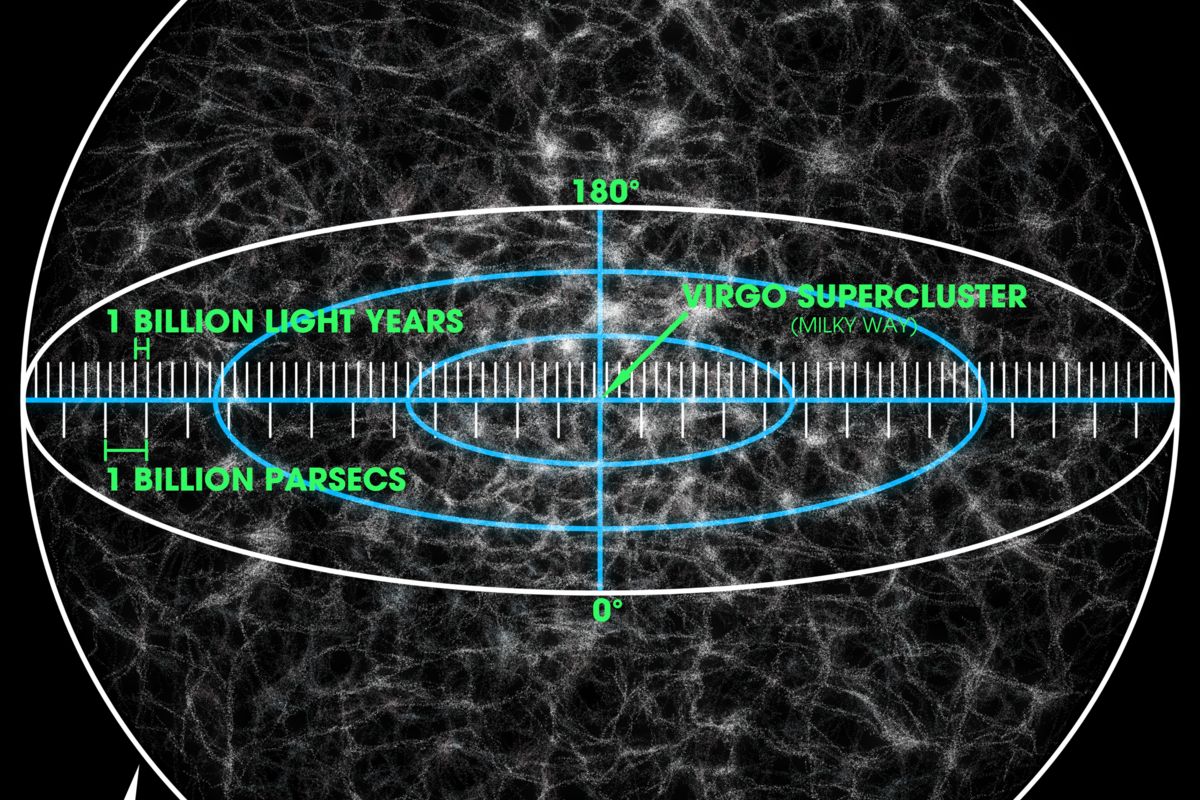
What is the Planck scale? The Planck scale is a realm of physics where the usual laws of nature break down, and quantum effects dominate. Named after physicist Max Planck, it involves incredibly tiny distances and immense energies. At this scale, gravity and quantum mechanics merge, creating a playground for theories like string theory and quantum gravity. Imagine trying to measure something so small that even atoms look gigantic in comparison. Understanding the Planck scale could unlock secrets about the universe's origin, black holes, and the fundamental nature of reality. Ready to dive into some mind-bending facts? Let's get started!
What is the Planck Scale?
The Planck scale represents the smallest measurements of space and time, where classical physics gives way to quantum mechanics. Named after physicist Max Planck, it’s a realm where the usual laws of physics no longer apply.
- The Planck scale is defined by fundamental constants: the speed of light, Planck's constant, and the gravitational constant.
- At this scale, distances are measured in Planck lengths, approximately (1.616 times 10^{-35}) meters.
- Time intervals are measured in Planck time, around (5.39 times 10^{-44}) seconds.
- The Planck mass is about (2.18 times 10^{-8}) kilograms, surprisingly large compared to other fundamental particles.
Why is the Planck Scale Important?
Understanding the Planck scale could unlock mysteries about the universe's origins and the nature of space-time itself. It’s a frontier where quantum mechanics and general relativity intersect.
- The Planck scale is crucial for theories of quantum gravity.
- It’s believed that at the Planck scale, space-time may become "foamy" or "quantized."
- Theories like string theory and loop quantum gravity aim to describe physics at this scale.
- The Planck scale might hold the key to unifying all fundamental forces.
Planck Scale and Black Holes
Black holes are extreme environments where the Planck scale becomes relevant. The physics of black holes could provide insights into Planck-scale phenomena.
- The smallest possible black hole, a Planck black hole, would have a radius of one Planck length.
- Hawking radiation, predicted by Stephen Hawking, involves quantum effects at the Planck scale.
- Black hole entropy, described by the Bekenstein-Hawking formula, is related to the Planck area.
- The information paradox in black holes might be resolved by understanding Planck-scale physics.
Planck Scale and the Early Universe
The early universe, moments after the Big Bang, operated at energies and scales where Planck-scale physics dominated.
- The Planck epoch is the earliest period in the universe, up to (10^{-43}) seconds after the Big Bang.
- During the Planck epoch, the four fundamental forces were unified.
- Quantum fluctuations at the Planck scale could have seeded the large-scale structure of the universe.
- Inflation theory, which describes the rapid expansion of the early universe, involves Planck-scale physics.
Challenges in Studying the Planck Scale
Studying the Planck scale is incredibly challenging due to the extreme conditions and tiny scales involved.
- Current technology cannot directly probe Planck-scale distances or times.
- High-energy particle accelerators, like the Large Hadron Collider, operate far below Planck energies.
- Indirect evidence from cosmology and black hole physics provides clues about Planck-scale phenomena.
- Theoretical models, rather than experiments, are the primary tools for studying the Planck scale.
Theoretical Implications of the Planck Scale
The Planck scale has profound implications for our understanding of the universe and the nature of reality.
- It suggests that space and time may be quantized, not continuous.
- The holographic principle proposes that the universe can be described by information on a lower-dimensional boundary.
- The Planck scale could reveal new dimensions beyond the familiar three spatial dimensions.
- It challenges the notion of a smooth space-time, suggesting a granular structure.
Future Prospects in Planck Scale Research
Despite the challenges, future advancements in technology and theory could bring us closer to understanding the Planck scale.
- Quantum computing might provide new ways to simulate Planck-scale physics.
- Advances in gravitational wave detectors could offer indirect evidence of Planck-scale phenomena.
- Collaborations between physicists, mathematicians, and computer scientists are essential for progress in this field.
The Fascinating World of the Planck Scale
The Planck scale is a mind-bending realm where the usual rules of physics break down. At this scale, distances and times are so tiny that quantum mechanics and general relativity clash, hinting at the need for a new theory of quantum gravity. Understanding the Planck scale could unlock mysteries about the Big Bang, black holes, and the fundamental nature of space-time.
While we can't directly observe phenomena at this scale, theoretical work and experiments in particle physics and cosmology continue to push the boundaries of our knowledge. The Planck scale remains a frontier of science, challenging our understanding and sparking curiosity. As research progresses, who knows what groundbreaking discoveries await? The journey into the Planck scale is just beginning, promising to reshape our grasp of the universe.
Was this page helpful?
Our commitment to delivering trustworthy and engaging content is at the heart of what we do. Each fact on our site is contributed by real users like you, bringing a wealth of diverse insights and information. To ensure the highest standards of accuracy and reliability, our dedicated editors meticulously review each submission. This process guarantees that the facts we share are not only fascinating but also credible. Trust in our commitment to quality and authenticity as you explore and learn with us.
